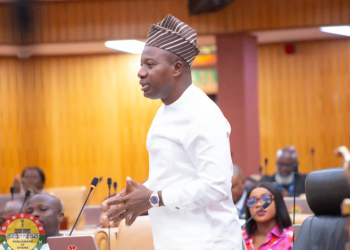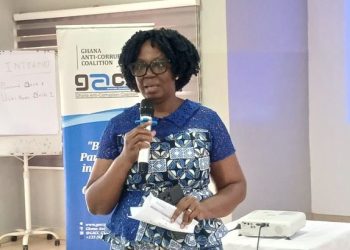Dr. Juliet Ohemeng-Ntiamoah, a US-based professional engineer with expertise in water treatment systems, has cast serious doubt on Ghana’s proposed river dechemicalisation programme announced by the Environmental Protection Agency (EPA).
She warned that the ambitious plan to use copper-based nanoparticles to cleanse heavy metal pollution in rivers is scientifically unsound, environmentally risky, and could result in another costly procurement scandal if pursued without rigorous testing and transparency.
Casting doubt on EPA’s approach
The Executive Director of the EPA, Professor Nana Ama Browne Klutse, revealed that the agency had reviewed several proposals and settled on using nano liquids, specifically copper-based nanoparticles, to remove toxins from river basins heavily contaminated by galamsey activities.
According to her, the method will be applied “in-situ,” meaning directly within the rivers, and is intended to restore entire water basins.
But Dr. Ohemeng-Ntiamoah countered that “river-wide dosing does not meet required conditions” for safe or sustainable water treatment. She questioned whether the EPA had conducted a comprehensive alternatives analysis before selecting the technology, asking:
Did the agency evaluate the availability of the chemicals and their long-term supply chain?
Were operational and maintenance costs fully examined?
Has the maturity of the technology — particularly its proven ability to work at scale — been properly assessed?
What residual impacts might be left behind in the environment after prolonged chemical dosing?
“These questions must be answered transparently before Ghana commits scarce public resources to such an experimental scheme,” she stressed.
Laboratory tests vs. real-world conditions
Central to Dr. Ohemeng-Ntiamoah’s concern is the claim that the nanoparticle technology had “worked in the lab.”
She described this as “overly simplistic and potentially misleading.”
She explained that laboratory research is highly controlled and does not reflect the dynamic complexity of river systems. “Anyone can add a coagulant to a river water sample in the lab, centrifuge it, and obtain clear water. But that does not mean we can continuously dose chemicals into flowing rivers and expect the same outcome,” she said.
Dr. Ohemeng-Ntiamoah cited examples from international practice where promising lab-based technologies collapsed at full scale.
She recalled a municipality in the United States that wasted millions of dollars after a treatment process, effective at a drinking water plant, failed in wastewater treatment due to pH differences.
Similarly, microbial fuel cells, first studied in the 1930s, continue to show promise in research but remain unworkable in practice because of low power output.
Scaling challenges in Ghana’s rivers
The engineer further warned that scaling from laboratory samples to vast river systems like the Ankobra is not straightforward.
“In a lab, dosing 10 milligrams of a chemical into a 100 mL sample may appear effective. But in a river, a single rainfall event could double the river volume, instantly diluting the chemical and rendering it useless,” she said.
The quantity of chemicals required to treat entire rivers would be enormous, raising questions about cost, logistics, and environmental consequences.
“It is neither practical nor sustainable. Without addressing the ongoing discharge of pollutants from illegal mining sites upstream, any cleanup will be short-lived and ineffective,” she cautioned.
The futility of cleaning rivers while galamsey continues
Dr. Ohemeng-Ntiamoah emphasised that trying to decontaminate rivers while illegal mining continues unchecked is a waste of resources.
She described the EPA’s plan as “scientifically unsound,” insisting that pollutants must first be stopped at the source.
“How will this method control stormwater runoff from surrounding mining sites or the continuous discharge of galamsey effluent? Until illegal mining is eliminated, chemical dosing is like pouring water into a basket,” she warned.
According to her, heavy metal removal technologies are typically suited for point-source discharges — where flow rates, pollutant levels, and targets can be defined — not vast, uncontrolled river basins.
Alternative solutions
Rather than pursuing large-scale river dechemicalisation, Dr. Ohemeng-Ntiamoah proposed a three-pronged alternative strategy:
Upgrade water treatment plants with affordable, proven heavy metal removal technologies to ensure a safe drinking water supply.
Strictly enforce mining regulations to end illegal mining activities that are the root cause of river contamination.
Promote riparian restoration by planting trees and shrubs along riverbanks to naturally absorb heavy metals and support long-term ecosystem recovery.
“These solutions are not only cost-effective but also sustainable. If we remove the sources of pollution and empower our water treatment facilities, natural processes like dilution and sedimentation will gradually restore our rivers,” she said.
A test of accountability
Dr. Ohemeng-Ntiamoah’s critique comes at a time when public confidence in environmental management is low, following years of devastation caused by galamsey and weak enforcement of mining regulations.
Her concerns highlight the need for transparency in procurement and decision-making at the EPA.












